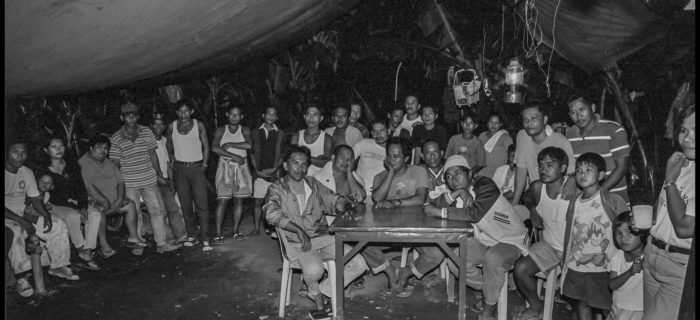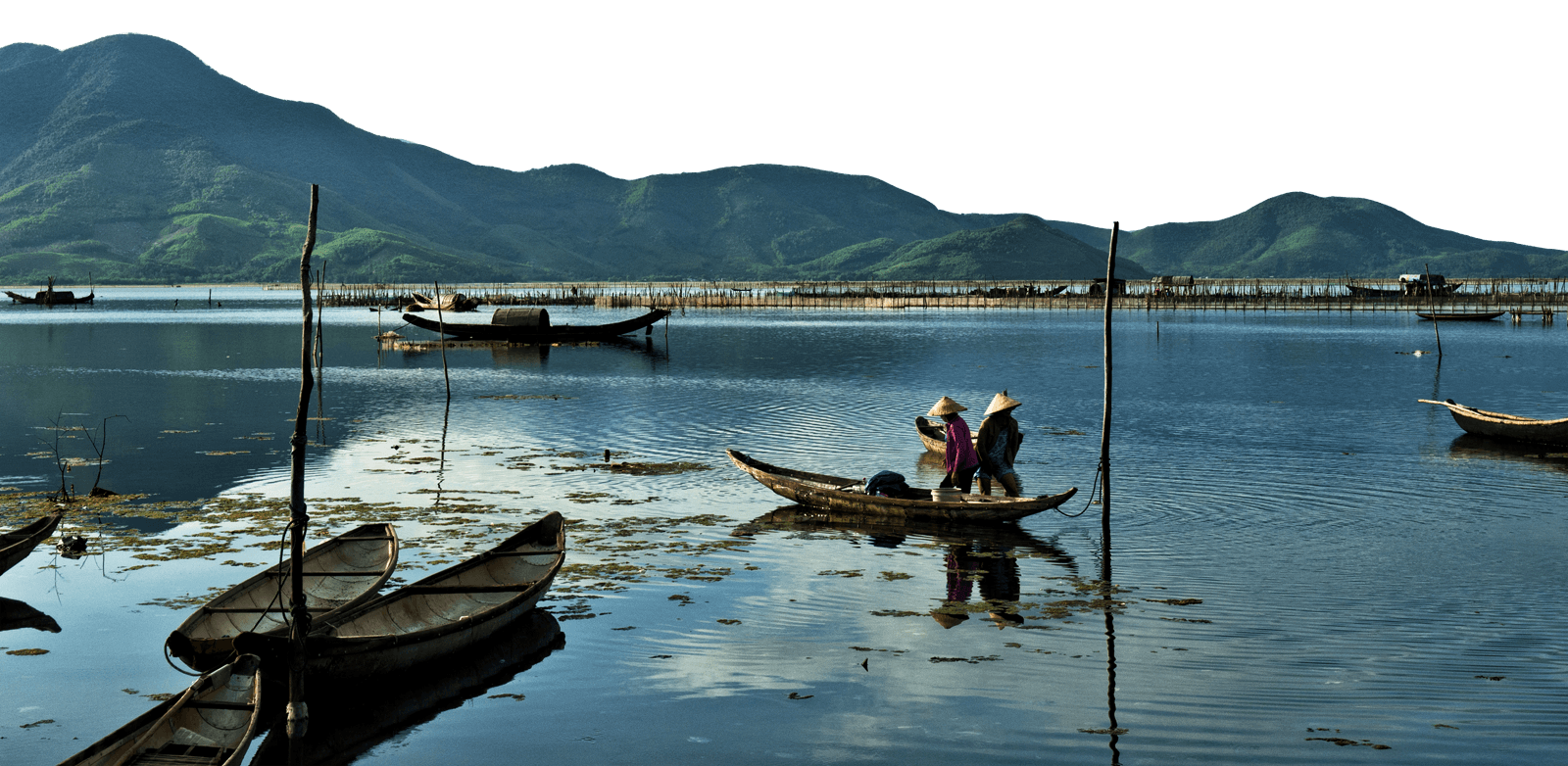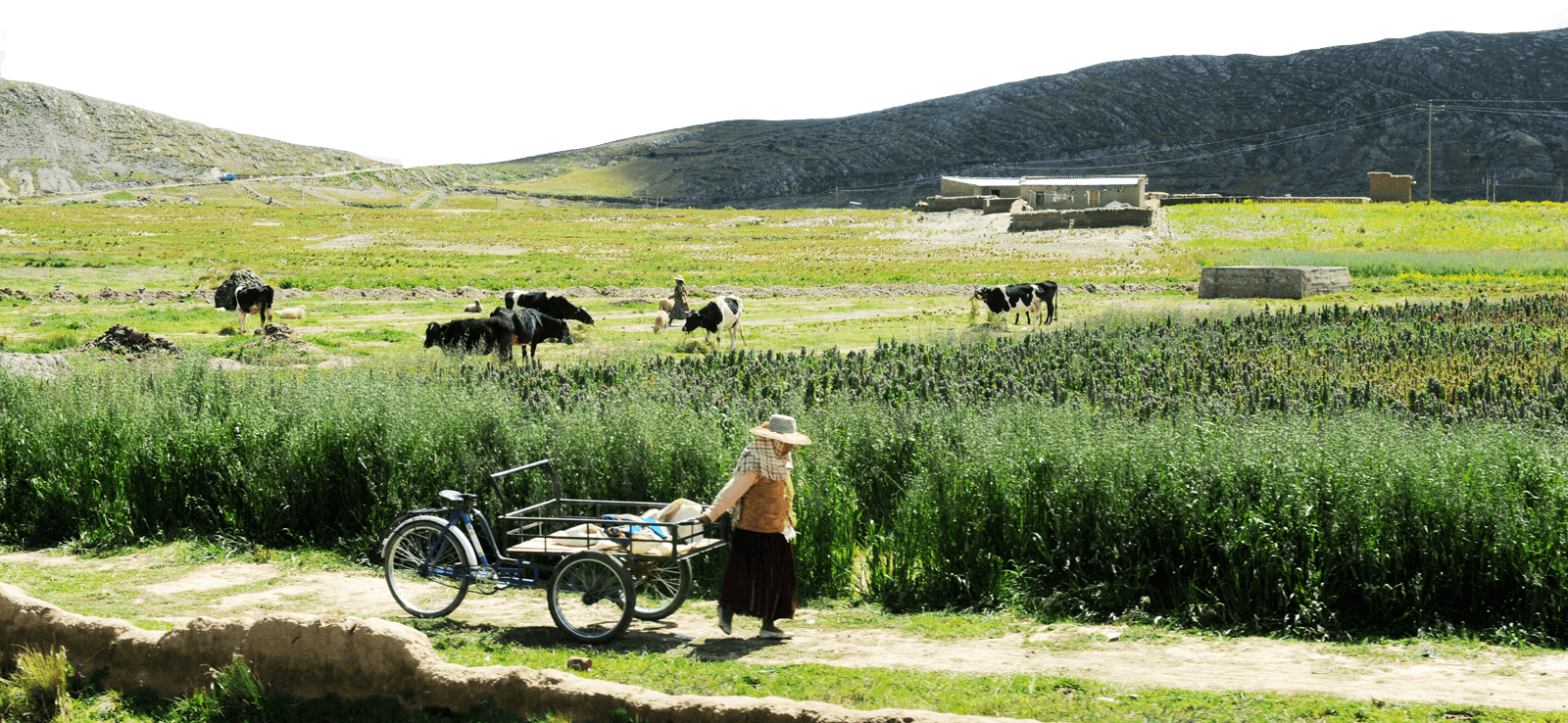Philippine Banana Cooperatives’ Successes and Challenges: Part 2
The following is the second part of an interview between Kahlil Apuzen-Ito from Foundation for Agrarian Reform Cooperatives in Mindanao (FARMCOOP) and Food First’s Erik Hazard, which took place just before the global COVID-19 shutdowns occurred. It is based off of Food First’s Issue Brief, Philippine Banana Farmers: Their Cooperatives and Struggle for Land Reform and Sustainable Agriculture by David Bacon.
Cover Photo by David Bacon
Erik Hazard (EH): So you spoke earlier about how FARMCOOP is working with indigenous communities around sustainable farming practices. How has FARMCOOP worked with indigenous farmers, in Sibulan specifically, to support alternative forms of development there?
Khalil Apuzen-Ito (KA): In the beginning, we were working with these indigenous farmers on developing organic banana cooperatives. We were able to work on organizing as well as developing organic methods that could work for the farms. Although these methods are not at all perfect, they are viable enough so the farms could produce and ship organic bananas to Japan.
Over time, as we started working in the area, we were approached by the tribal council to also develop the more remote areas of their community where poverty is higher, the youth are more at risk of being recruited into armed forces, the education level is low, and employment is incredibly limited. Many women have few opportunities so the risk for teenage pregnancy is higher in this area.
After being approached, we began developing another cooperative with them to grow more cacao and coffee under an agroforestry system in those areas. Bananas in these areas could not work since they were too remote and impractical for the community to grow. We also worked with the communities to support households in organically producing their own vegetables.
We’ve also been involved in indigenous seed saving for herbs and vegetables, which ended up being quite critical. In 2016, there was a severe El Niño, and the only vegetables that survived without watering during those months of drought were the indigenous varieties of vegetables. There was a lot of hunger in Sibulan but the community organizers who were comprised of indigenous women in the area told us that the organic vegetables were the ones that helped them during the drought. Our work with them has also included the revitalization of indigenous practices that could also be integrated back into the cooperatives over time.
EH: Were there any multinational corporations trying to persuade these indigenous communities to adopt development projects along their models?
Stay in the loop with Food First!
Get our independent analysis, research, and other publications you care about to your inbox for free!
Sign up today!KA: Actually, in the very beginning, when we were approached by the leaders of an indigenous community, they asked our Executive Director, Koronado Apuzen, to attend a meeting where there were also representatives of multinational corporations who wanted to develop the land. They were proposing to the tribal leaders that they use conventional agriculture, which of course, means large amounts of chemicals. Many of the tribal leaders were actually exposed to these types of chemicals such as pesticides in the past. At the end of the meeting, Koronado offered an alternative approach to agriculture which was organic. This offer had a stipulation that the community’s fruit trees and other indigenous trees would not be cut down,which would be required for the proposed conventional agriculture projects. After the meeting, it was a unanimous decision among the indigenous leaders that they would prefer FARMCOOP to come instead of the multinational companies.
It’s a community close to the cities and there will always be companies pushing to develop the area probably. But having a blessing from the tribal leaders for FARMCOOP to be more involved with them is a great honor for us and allows us to work with them more in developing the sustainability of their lands.
EH: What are some of the current difficulties that the banana coop farmers are facing?
KA: Well, quite a lot!
In Mindanao, the infrastructure for the farms is very insufficient. In Sibulan, there is no infrastructure for irrigation. In the agrarian reform lands, where the beneficiaries inherited lands that were previously controlled by multinational corporations, there was infrastructure for irrigation. But that infrastructure has been unused since and has deteriorated. There was very little training during the transition so that the new farmers who used to be wage workers could also work on the irrigation themselves.
For farmers in remote areas, such as Sibulan for instance, the roads are in bad condition so that it is difficult for farmers to deliver their produce to markets. We have worked to use our networks in the government to get funds for roads to be built in the areas where transportation is seriously lacking.
Many of the agrarian reform lands, which had undergone decades of conventional farming, are suffering from severe erosion and significant degradation. There is hardly any fertility in these areas. Many of the farms thus have poor fertility and then have to rely on inputs to produce bananas unless the fertility is essentially rebuilt.
Another problem that the farmers have is limited technical training and resources such as effective farm management, practical approaches to sustainable farming, soil and water conservation that are locally appropriate, and resiliency practices to climate change. Much of the training on climate change right now has more to do with evacuation and not so much how to make your farm resilient during climate extremes.
Because many banana farmers are still in a monocropping system, there are many problems with pests and diseases. It is quite vulnerable due to this.
Farmers also lack institutional support and there are also problems with landgrabbing as well. Sometimes their security in land ownership can be destabilized by these forces that are involved in land grabbing. The department of agriculture has also allowed for the individual titling of lands, which creates the situation over time where the cooperatives will basically dissolve because the land will be under individual instead of collective titles.
Many of the cooperatives have come up with ways to avoid this trap so the lands will remain under cooperative ownership.
And farm succession is another issue that farmers are struggling with and something that needs to be addressed. When we think about succession, the incorporation of women and youth in the process is very critical for sustainability.
EH: Who is involved in the land grabs?
KA: Well, it is quite complicated and contentious. In some cases, there are actually connections to the government. There are different cases and different actors involved depending on which area we are talking about. I can only speak of certain cases in remote areas.
When some farmers are struggling to get by, they go into rental agreements with external actors, which end up with companies treading on ancestral land. In another case, there is someone who knows a lot about agrarian reform and has used armed “goons” to occupy cooperative land and basically threaten the agrarian reform beneficiaries from accessing their own land. There are different cases and it really depends on each case, but there many different entities that are involved in these processes of land grabbing.
It’s very complex, but what I think is very critical is helping the cooperative members know and understand their legal rights, as well as the indigenous communities. We need more organizing and awareness building in these communities. There can be some threats of violence by the land grabbers and their goons. In one case, one of the leaders was killed.
EH: Earlier, you spoke about getting women and youth more involved in different ways. In the banana cooperative farming communities, have there been advances in this area?
KA: It depends on what cooperative we are talking about. When the agrarian reform came about and the lands were being redistributed back to the farmworkers, the program for gender equity was not developed. So much of the land ownership went to men. In deciding who to represent the cooperatives, it is mostly men. Most of the field managers are men.
The interesting thing though is that one of the most dynamic and successful cooperatives that we are partnered with right now is led by women. The farm manager is a woman. It is a mostly female-led board of directors. Their male board of directors are incredibly supportive. This cooperative has come up with amazing ways to build up the sustainability of their cooperative. They have thought far in advance as to what to do about succession, and they are one of the foremost drivers of addressing violence against women in the workforce and in the home. They serve as a model for many. So even though most cooperatives are mainly led by men, there is this other female cooperative that is rising.
While many of the cooperatives are still led by men, there have been improvements for women through gender sensitivity programs and trainings, building awareness in gender equity, and pushing for more parity on their boards.
It is a process, but there is indeed an openness. And as long as there is an openness, I think then we can work with that. With the indigenous communities that we work with, it is specific to their tribe that the land is passed down from men to men, but there are some cases where women do own land.
EH: So there are lots of lessons to be learned from the experiences of the banana cooperative farmers in the Philippines. Why would you make the case that the different food movements in the United States should be learning about the story of these cooperative farmers?
KA: I’m not sure how many people in these spaces or movements know about the banana plantations in the Philippines or elsewhere in the world, but it is important to realize how these banana monocropping practices and chemicals were brought over the by the United States-based multinational corporations, just like in parts of Central America such as Honduras, Guatemala, and Costa Rica. The banana is the second most traded fruit in the world and the US has for many years been the largest importer of bananas from the Global South. This of course is the single variety, Kavandesh.
Prior to logging and plantation agriculture, Mindanao was one of the most diverse places in the world. Our small-farming banana cooperatives inherited a monocropping system with lands that were severely degraded and water terribly polluted, with very little wildlife or biodiversity left. The farms were highly compacted with poor fertility and extremely susceptible to climate extremes like droughts, storms, and typhoons. Because there is only one variety of banana that is being produced for export, these farms are highly vulnerable when a pest or disease comes through.
Currently, we are working with other organizations in Latin America as well as small-holder farmers and unions who are involved in banana farming. We all have similar challenges in building sustainability of banana farms. It is a process, but I think that, despite the geographic distance between all of us, we have similar aspirations for sustainability. It is a unanimous statement for all of us that the transition to sustainable agriculture is going to need support from institutions, certification bodies, and consumers. It is crucial for people to understand and be aware of not only the challenges and the complexities faced by small banana farmers, but also the successes that can come from being persistent and working collaboratively.
I think what Food First is doing in building this awareness is critical for the different movements – the food, coop, and sustainability farming movements – to understand about the cooperatives not only in the Philippines, but other parts of the world as well.


 Help Food First to continue growing an informed, transformative, and flourishing food movement.
Help Food First to continue growing an informed, transformative, and flourishing food movement.




